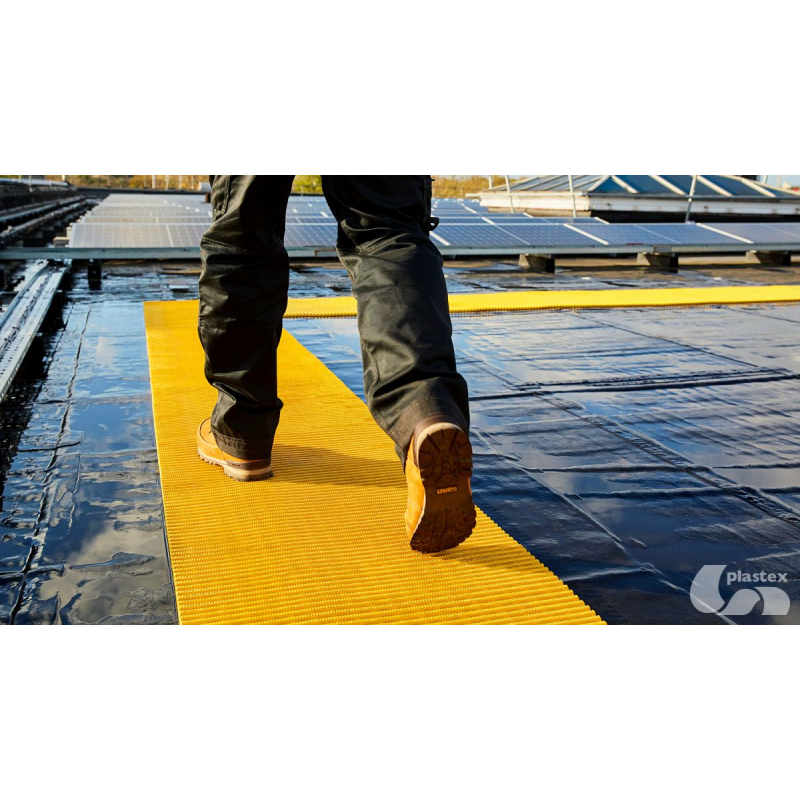













Anti-slip track mats for flat roofs
Floor covering with multidirectional drainage, improved anti-slip system and unrivalled performance.
10-year warranty.
Quick and easy to install, with no need for fasteners. Easy to maintain and available in 10-meter rolls. Colors available on request.
Crossgrip 20/20 is the ideal solution for flat roofs, thanks to its multi-dimensional drainage system, enhanced anti-slip properties and unbeatable 10-year warranty.
With excellent UV resistance and a flexible construction that conforms to the roof structure, this product offers unrivalled performance even in the most adverse conditions.
| C2G |
Data sheet
| Format | Roller |
| Properties | Draining Non-slip |
| Composition | PVC (Polyvinyl chloride) |
| Weight | |
| Fire classification | Cfl-s1 |
| Resistant to chemicals | Yes |
| Operating temperature | |
| Intensity of use | Intense |
| Wear index | 2/3 (Very good) |
| Height | |
| Anti-slip classification | R11 |
| Acoustic insulation | |
| Hygiene | |
| Reversion | |
| UV light | |
| Warranty | |
| Drainage capacity | V10 |
Grating is a square slab of metal, polyester, rubber or PVC, made up of several parallel slats. The slats come in a variety of sizes, species and colors, and are grooved to prevent water from stagnating and the floor from becoming slippery.
Polyester gratings: Food industry - Paper and cellulose industry - Pharmaceutical industry - Plastics industry - Fiber and textile industry - Automotive and aircraft construction - Offshore installation - Sewage treatment plant - Navy and shipbuilding - Transport - Pickling and galvanizing plant.
Rubber gratings: Can be used in a wide range of applications: building entrances, walkways, stairs, access paths, production lines, ski resorts, etc.
Hygienic gratings: swimming pools - changing rooms - saunas - hotels - kitchens - steam rooms, etc.
Metal gratings: Thermal, hydroelectric, nuclear and solar power plants - Chemical and oil industries - Automotive and steel industries - Shipbuilding - Cement works - Metal processing and construction - Railways and transport